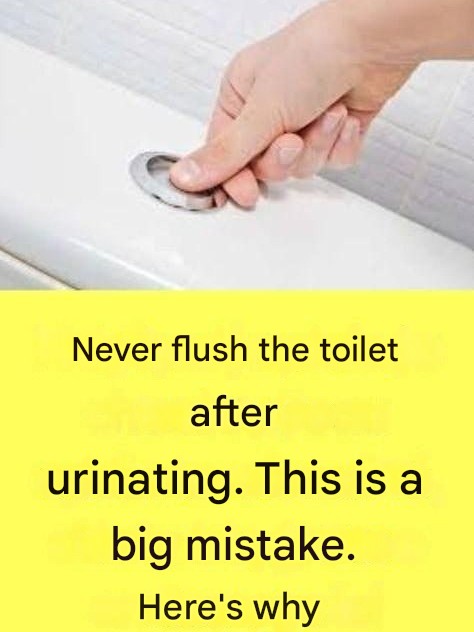ADVERTISEMENT
If odor is a concern, there are simple solutions like adding a small amount of water to the toilet bowl or using a toilet bowl freshener to help mask any scents. These alternatives can help control odor without the need to flush immediately after every urination.
#### 3. **Efficiency in Water Use**
As we discussed earlier, the amount of water used in each flush can add up quickly. By waiting until the toilet is used multiple times before flushing, you can make a significant impact on water conservation in your home. This practice is especially beneficial in areas where water conservation is a priority or where the local water supply is limited.
If you’re in a region that experiences drought or has limited access to fresh water, reducing your water consumption by not flushing after every urination can be an easy but effective way to contribute to water conservation efforts.
#### 4. **Psychological Benefits of Reducing Waste**
There is also a psychological benefit to consciously reducing waste in your life. In a world where we are increasingly aware of our environmental footprint, small changes like reducing the frequency of toilet flushing can help individuals feel more in control of their personal impact on the environment. It’s a small but meaningful step toward living a more sustainable lifestyle.
### How to Implement the Practice of Not Flushing After Every Urination
If you’re ready to make the change and stop flushing after every urination, here are a few tips to help you get started:
#### 1. **Start Slowly**
The first step is to simply become aware of your flushing habits. You don’t need to change everything overnight. Start by intentionally choosing to flush less often, especially when you are the only one using the toilet. Observe the results over time and get comfortable with the practice before making it a regular habit.
#### 2. **Educate Household Members**
If you live with others, it’s important to educate everyone on the benefits of not flushing after every urination. Have a discussion about why this practice is beneficial, both from an environmental and practical standpoint. Make sure everyone is on board with the change, so everyone can contribute to water conservation in your household.
#### 3. **Set Guidelines for Hygiene**
While you may be tempted to skip the flush every time, it’s important to ensure that hygiene is not compromised. In some cases, such as when there’s a strong odor or urine with visible particles, flushing may still be necessary. Set clear guidelines for when it is appropriate to skip the flush and when you should flush immediately. For example, if you are the only one using the toilet and there’s no noticeable odor, you can wait to flush.
### Conclusion
It may seem unconventional at first, but refraining from flushing after every urination can have significant environmental and practical benefits. By reducing water waste, easing the strain on sewage systems, and preserving plumbing components, you can contribute to more sustainable living practices. Moreover, you may find that it helps you lower your water bills while also improving the efficiency of your home’s plumbing system.
At the end of the day, it’s about making conscious, informed decisions that align with both your values and the reality of limited resources. By reducing unnecessary toilet flushes, we can all play a part in building a more environmentally friendly and sustainable future—one small, conscious decision at a time.
